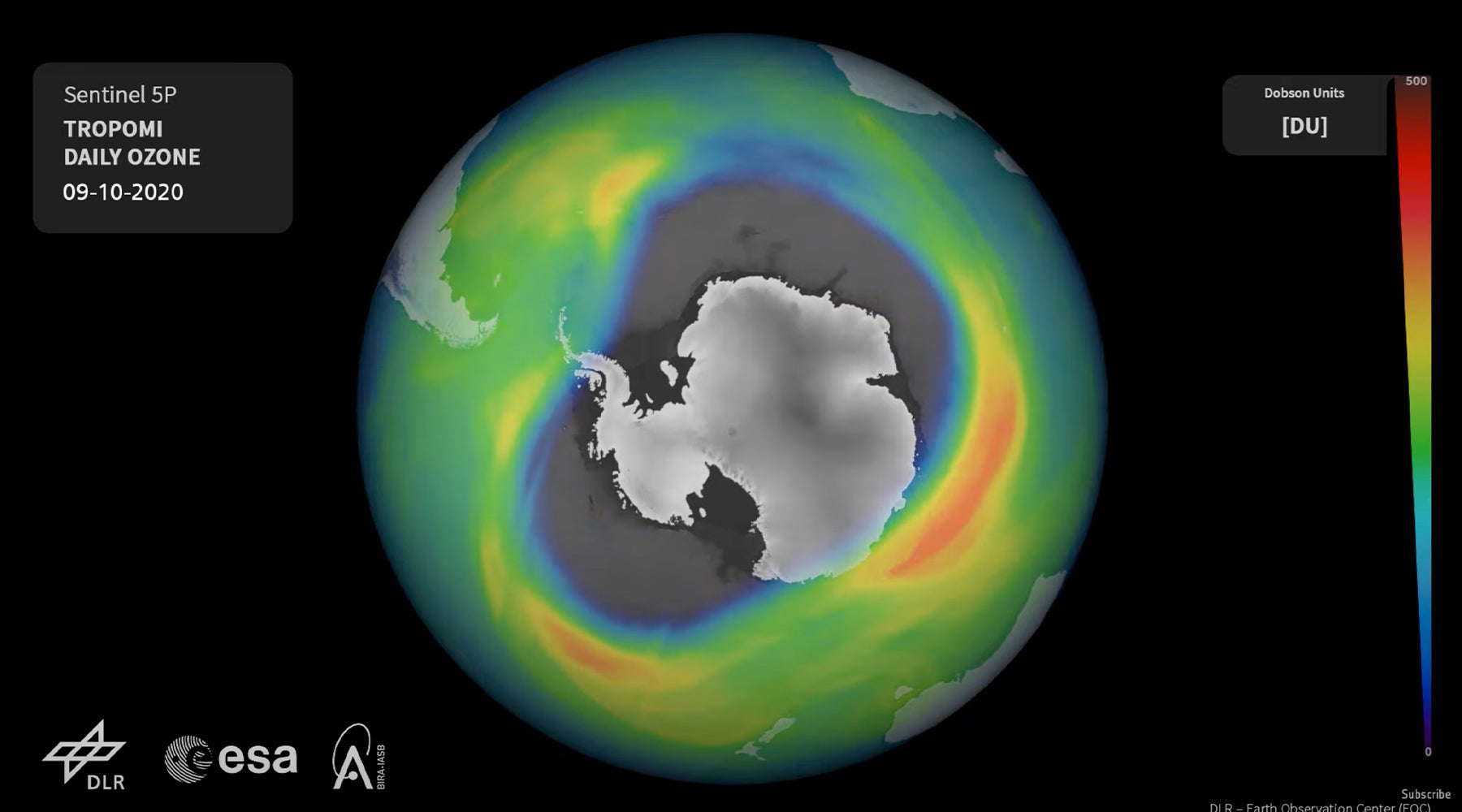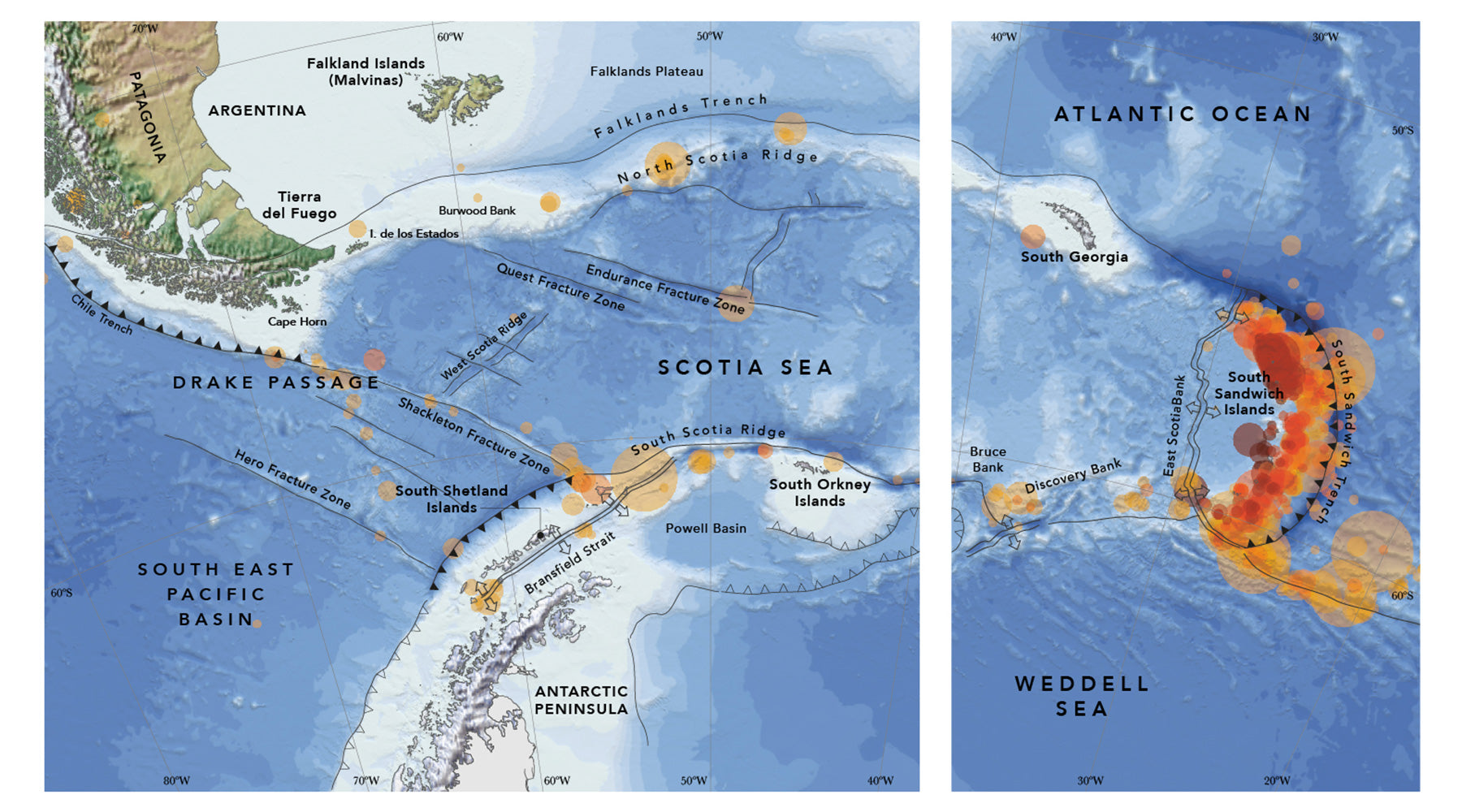
Why was 2020’s ozone hole so big?
Images from the European Space Agency (ESA) of 2020’s ozone hole above the Antarctic reveal it was one of the largest and deepest for some years. So how concerned should we be?
Words by Rachel Halliburton // Images by European Space Agency
It was 1985 when scientists first discovered that a hole in the ozone layer was letting dangerous UV radiation reach ground level after they compared years of satellite data above the Antarctic stations of Halley and Faraday. The discovery transformed debate about climate change, waking a generation up to the need to battle global warming. Greenhouse gases including CFCs (chlorofluorocarbons, used in fridges and air conditioners) were quickly linked to the ozone layer’s destruction. After initial restrictions they were banned outright in 2010.
The dramatic size of the 2020 hole shows why it’s so important the bans remain in place. Yet it’s not entirely cause for despair. The ozone layer is also depleted by the extreme cold, caused here by a strong cycle of winds known as the polar vortex. That means that it expands each year between August and October during the South Pole’s winter. The freezing temperatures create a ‘breed’ of cloud – the polar stratospheric cloud – that helps intensify levels of chlorine and bromine in the atmosphere. Since these are the chemicals that destroy ozone, the colder it is, the greater the damage.
The good news is that the chemical restrictions are working. If they had not been enforced the hole would be even larger. Increasingly sophisticated equipment is allowing scientists to get a far better idea of the level of pollutants in the atmosphere. The ESA’s satellite Copernicus Sentinel-5P, which produced these images, features a state-of-the art instrument called Tropomi, a super-sensor that since 2017 has examined dangerous gases with a precision never attained before. Happily, the conclusion is that despite annual variations, the trend for pollutants is going in the right direction. Claus Zehner, ESA’s mission manager for the satellite says that “scientists currently predict that the global ozone layer will reach its normal state again by around 2050”.


